Forgetting the combination to a lockbox can be incredibly frustrating, especially when you need to access what’s inside. Whether it’s for a house key, important documents, or other valuables, being locked out is a situation no one wants to face. Fortunately, if you find yourself in this predicament, there are several methods you can try before calling a locksmith.
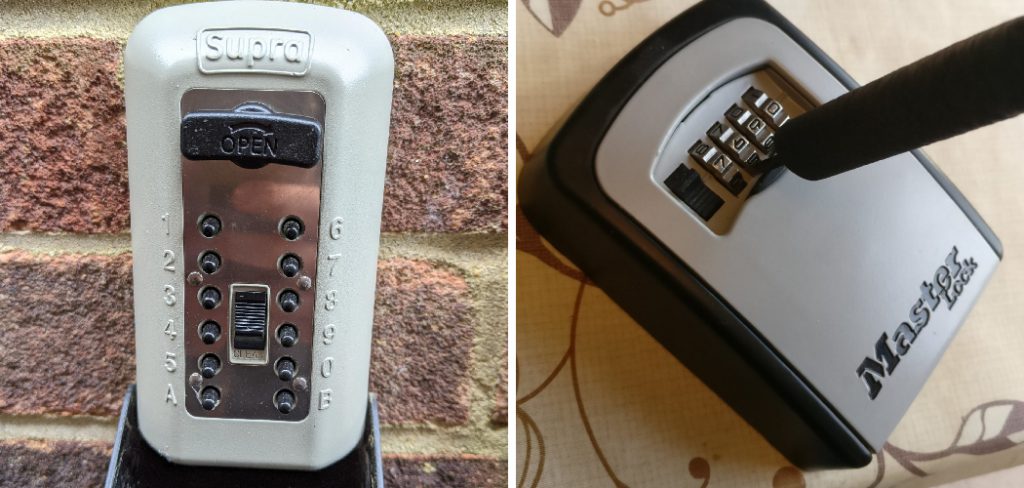
This guide will walk you through 10 different ways how to open a lockbox without the code. From simple decoding tricks to more forceful methods, you’ll learn a range of techniques to regain access to your property. Please remember, these methods should only be used on your own lockbox or with explicit permission from the owner.
What a Lockbox Is
A lockbox is a secure container designed to store valuable items, such as keys, documents, or small personal belongings. It is often equipped with a combination lock or key mechanism to restrict access and ensure security.
Lockboxes are commonly used by real estate agents to securely store house keys for property showings, by businesses to safeguard sensitive documents, or by individuals looking for a compact and portable solution to protect their valuables. Their sturdy construction and ease of use make them a popular choice for enhancing security in various settings.
Types of Lockboxes
Lockboxes come in various types, each designed to meet specific needs and applications. The most common types include:
- Key Lockboxes – These are designed to securely store keys and are often used in real estate or by homeowners. They usually feature combination dials or PIN-code mechanisms for access.
- Portable Lockboxes – Lightweight and compact, these lockboxes are ideal for traveling or on-the-go security needs. They can store small valuables such as cash, credit cards, or jewelry.
- Wall-Mounted Lockboxes – These are fixed to a wall or another solid surface and are frequently used in office settings or shared spaces for secure access to keys or important items.
- Biometric Lockboxes – Equipped with fingerprint recognition technology, biometric lockboxes offer advanced security by allowing access only to authorized users.
- Fireproof and Waterproof Lockboxes – Designed to protect contents from extreme conditions, these lockboxes are ideal for storing critical documents, electronics, or irreplaceable items in case of emergencies.
By selecting the right type of lockbox, users can ensure their belongings remain safe and well-protected in a variety of scenarios.
10 Easy Steps on How to Open a Lockbox without the Code
1. Decode the Lockbox with a Shim
One of the most effective non-destructive ways to open a combination lockbox is by using a shim. A shim is a thin piece of metal, often made from a cut-up aluminum can, that can slide between the lock’s wheels.
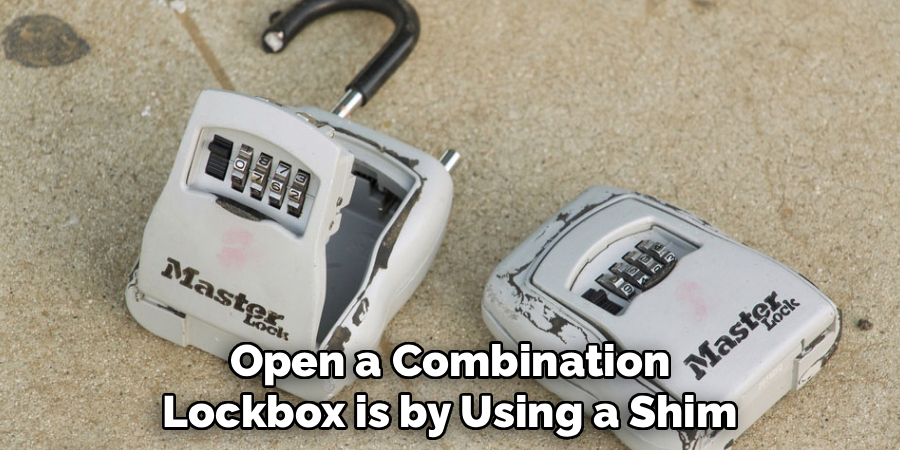
The goal is to feel for indentations in the wheels as you rotate them. When you feel a slight give or catch, it usually indicates you’ve found the correct number for that dial. Start with the first wheel and work your way across, aligning each number as you find the indentation. This method requires patience and a delicate touch, but it’s a popular technique because it leaves the lockbox completely intact.
2. Reset the Code if the Feature is Available
Many modern lockboxes, especially electronic or push-button models, come with a reset feature. Check the manufacturer’s instructions (which you can usually find online) to see if your lockbox has a reset lever or button. This is often located inside the lockbox, which presents a challenge if it’s currently locked. However, some models have an external reset mechanism that can be activated with a special tool or by following a specific sequence. For example, some Master Lock lockboxes have a reset tool that allows you to change the combination even when it’s closed. Always check the manual for your specific model first, as this can be the quickest and easiest solution.
3. Use Brute Force by Testing All Combinations
While it may sound tedious, the brute force method is straightforward and guaranteed to work eventually, especially for lockboxes with fewer dials. A three-digit lockbox has 1,000 possible combinations (000 to 999), and a four-digit one has 10,000. It might take some time, but systematically trying every combination starting from 000, 001, 002, and so on will eventually lead you to the correct code. This is a non-destructive method that requires no special tools, just a good deal of patience. To make it more manageable, you can dedicate 15-20 minutes at a time to testing a few hundred combinations.
4. Manipulate the Lock with a Tension Wrench
Similar to using a shim, this method involves feeling for the internal mechanisms of the lock. By applying slight tension to the shackle or opening lever with a tension wrench (or even just by pulling on it), you can rotate the dials one by one. As you turn each wheel, you may feel it click or settle into place when it hits the correct number.
The applied tension creates a subtle feedback loop that can help you identify the right digits. This technique takes practice to master but is a favorite among lock-picking enthusiasts because it exploits the small manufacturing tolerances inside the lock.
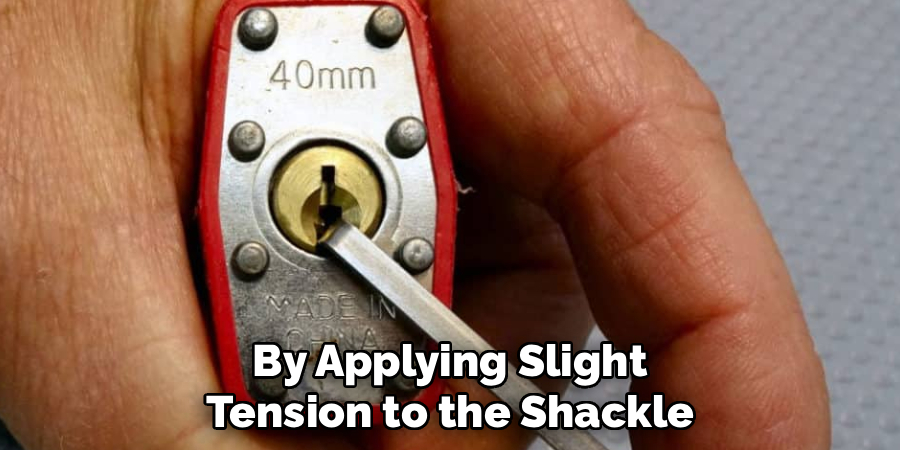
5. Use a Lock-Picking Set
If you have some experience with lock picking, you can use a standard lock-picking set to open a keyed lockbox. This method requires a tension wrench and various picks to manipulate the pins inside the lock cylinder. The process involves applying gentle rotational pressure with the tension wrench while using a pick to lift each pin to the shear line. Once all pins are correctly set, the lock will turn. This method is highly effective but requires a specific skill set and tools. It’s a great skill to learn for any lock-related emergency, not just for lockboxes.
6. Open the Lock with a Hammer
When less destructive methods fail and you need immediate access, it may be time to use force. A sturdy hammer can be used to break open many consumer-grade lockboxes. Aim for the weakest points, such as the hinges or the locking mechanism itself. Be aware that this will almost certainly destroy the lockbox and potentially damage its contents, so it should be used as a last resort. Always wear safety goggles to protect your eyes from flying debris. While effective, this method is messy and permanent, so be sure you are ready to replace the lockbox afterward.
7. Pry it Open with a Screwdriver or Crowbar
For a more targeted application of force, you can use a flathead screwdriver or a small crowbar to pry the lockbox open. Insert the tool into the seam between the door and the body of the lockbox and apply pressure to pop the door open. This method is most effective on less durable, plastic, or thin metal lockboxes.
You may need to work your way around the seam to find a weak point. Like using a hammer, this approach will likely damage or destroy the lockbox, so proceed with caution.
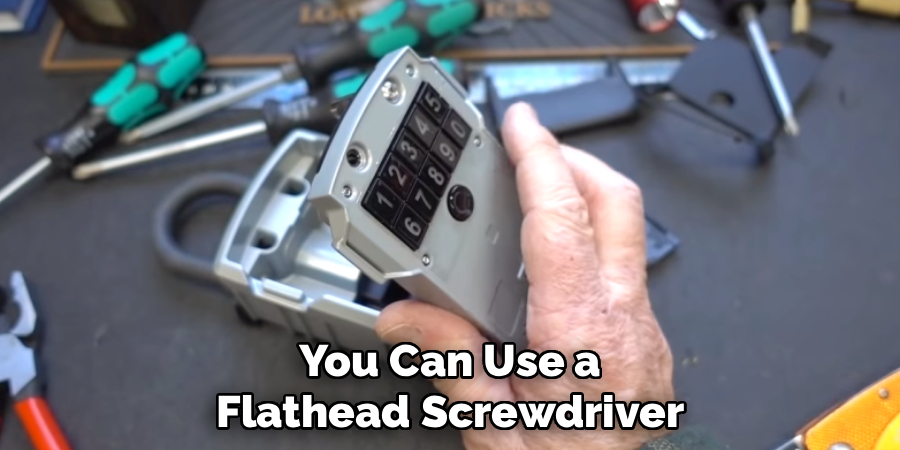
8. Cut the Shackle with Bolt Cutters
If your lockbox is attached to something with a shackle (like a doorknob or railing), cutting the shackle can be an effective way to remove it. A pair of bolt cutters can slice through most standard lockbox shackles. This allows you to take the lockbox to a more controlled environment where you can work on opening the box itself without being constrained by its location. This method destroys the lockbox’s ability to be secured but may leave the container itself intact, allowing you to retrieve the contents without damaging them.
9. Drill Through the Locking Mechanism
Drilling is a precise but destructive method for opening a lockbox. By using a metal drill bit, you can drill directly into the lock cylinder or the internal mechanism. This will destroy the lock and allow you to open the box. It’s important to research your specific lockbox model to identify the best spot to drill. This technique requires a power drill and appropriate bits, and you should always wear safety glasses. While it creates a clean opening, it renders the lockbox useless for future security.
10. Call a Professional Locksmith
When all else fails, or if you want to ensure the lockbox remains undamaged, calling a professional locksmith is your best bet. Locksmiths have the expertise, specialized tools, and experience to open almost any lockbox without damaging it.
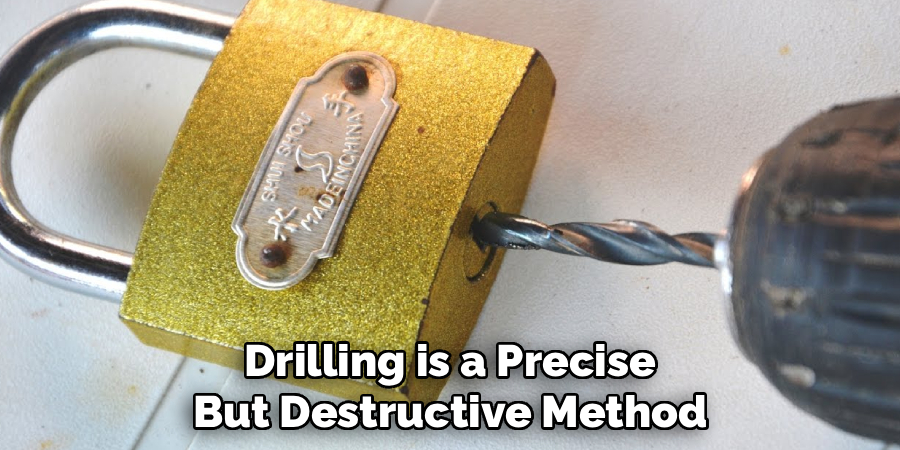
While this option comes at a cost, it saves you time, frustration, and the need to purchase a new lockbox. A locksmith can often open the box quickly and may even be able to reset the combination for you. It’s the safest and most reliable way to solve the problem, especially if the contents are valuable.
Conclusion
If you find yourself locked out, trying these methods can help you regain access. Start with the least destructive options first and only resort to force when absolutely necessary. And if you’re ever in doubt, a professional is just a phone call away. Thanks for reading this blog post on how to open a lockbox without the code! We hope you found it helpful and informative.
About
Safety Fic is a distinguished figure in the world of Diy design, with a decade of expertise creating innovative and sustainable Diy solutions. His professional focus lies in merging traditional craftsmanship with modern manufacturing techniques, fostering designs that are both practical and environmentally conscious. As the author of diy, Safety Fic delves into the art and science of Safety Fic-making, inspiring artisans and industry professionals alike.
Education RMIT University
(Melbourne, Australia) Associate Degree in Design (Safety Fic) Focus on sustainable design, industry-driven projects, and practical craftsmanship. Gained hands-on experience with traditional and digital manufacturing tools, such as CAD and CNC software.
Nottingham Trent University
(United Kingdom) Bachelor’s in diyfastly.com and Product Design (Honors) Specialized in product design with a focus on blending creativity with production techniques. Participated in industry projects, working with companies like John Lewis and Vitsoe to gain real-world insights.
Publications and Impact
In diy, Safety Fic his insights on indoor design processes, materials, and strategies for efficient production. His writing bridges the gap between artisan knowledge and modern industry needs, making it a must-read for both budding designers and seasoned professionals.
